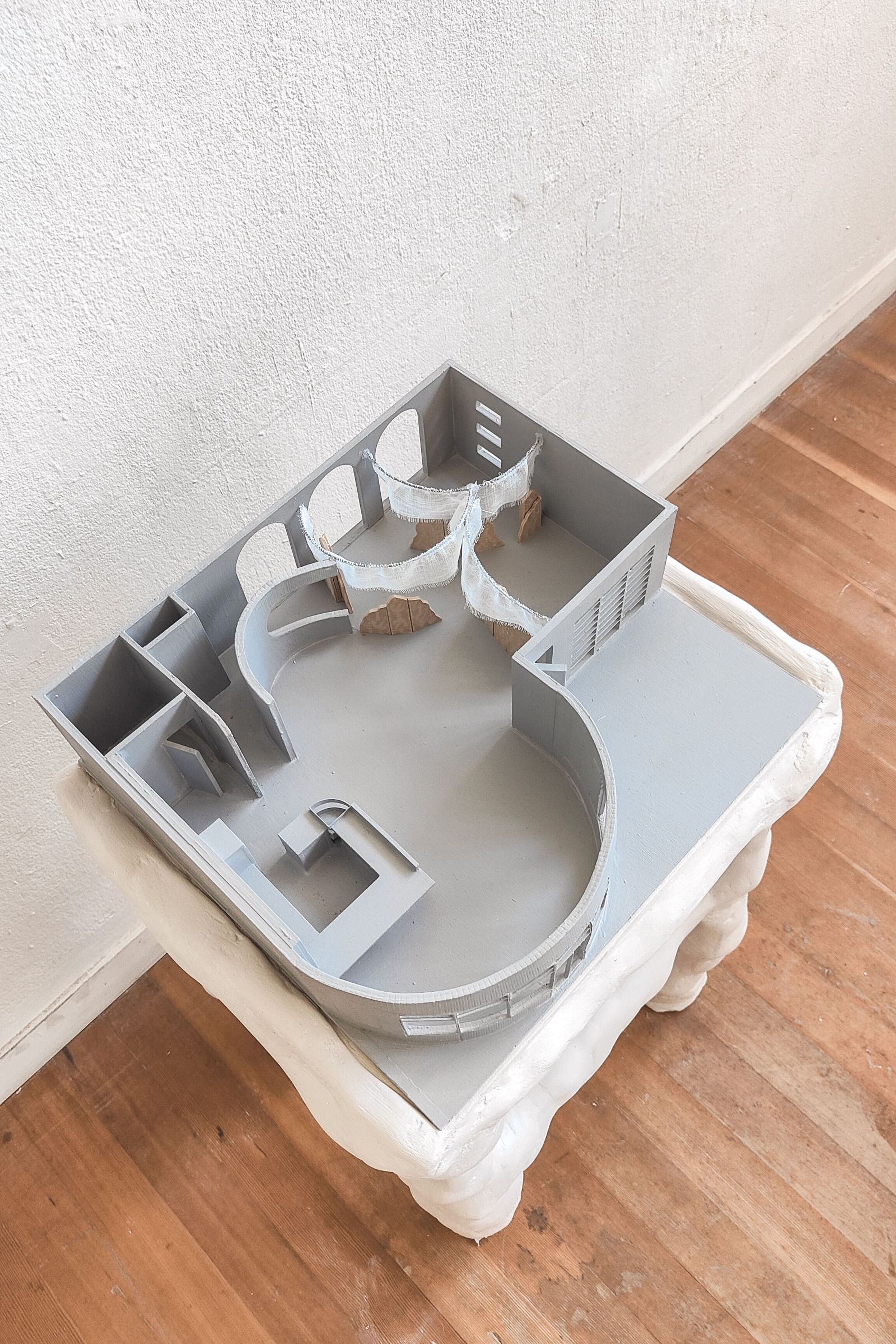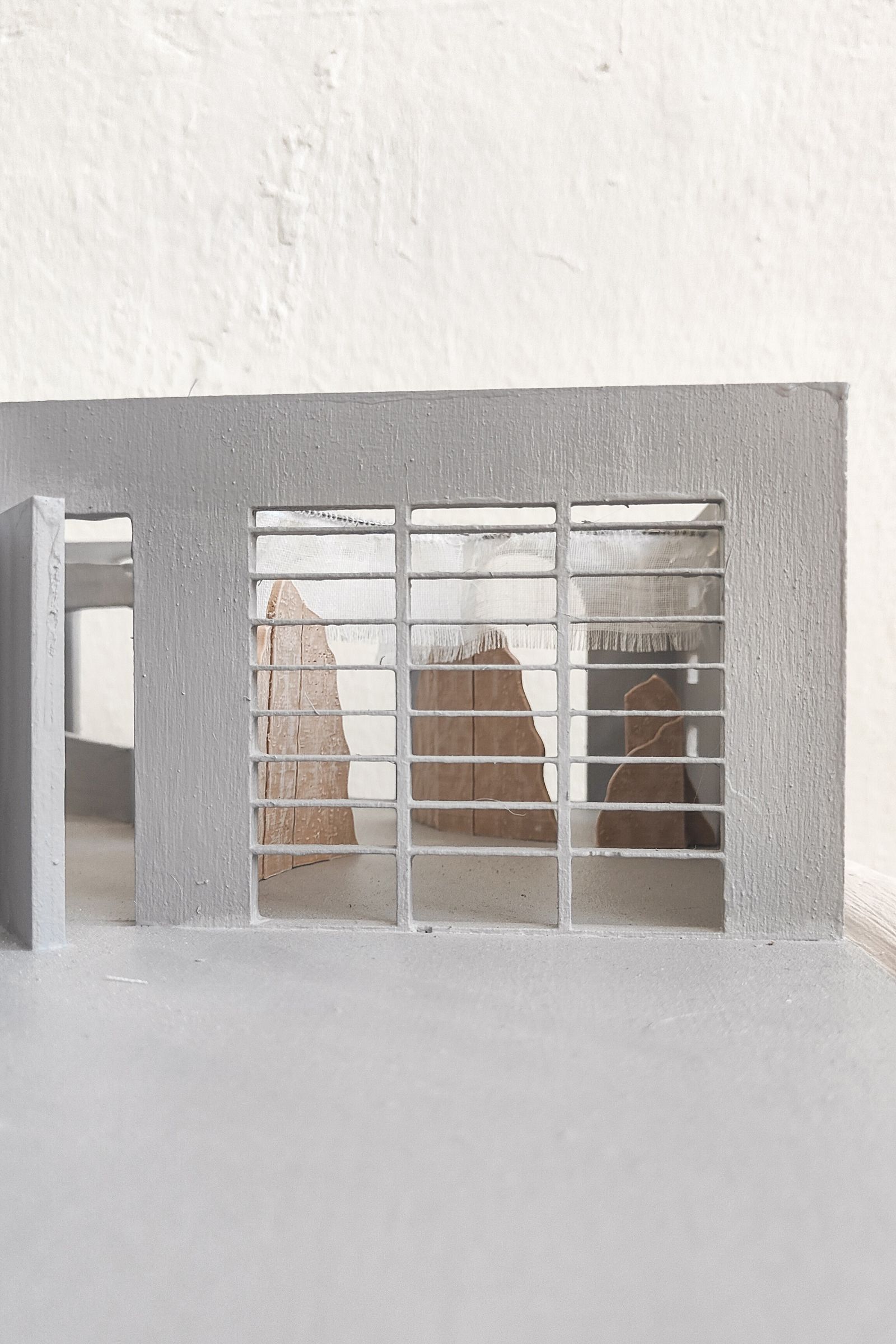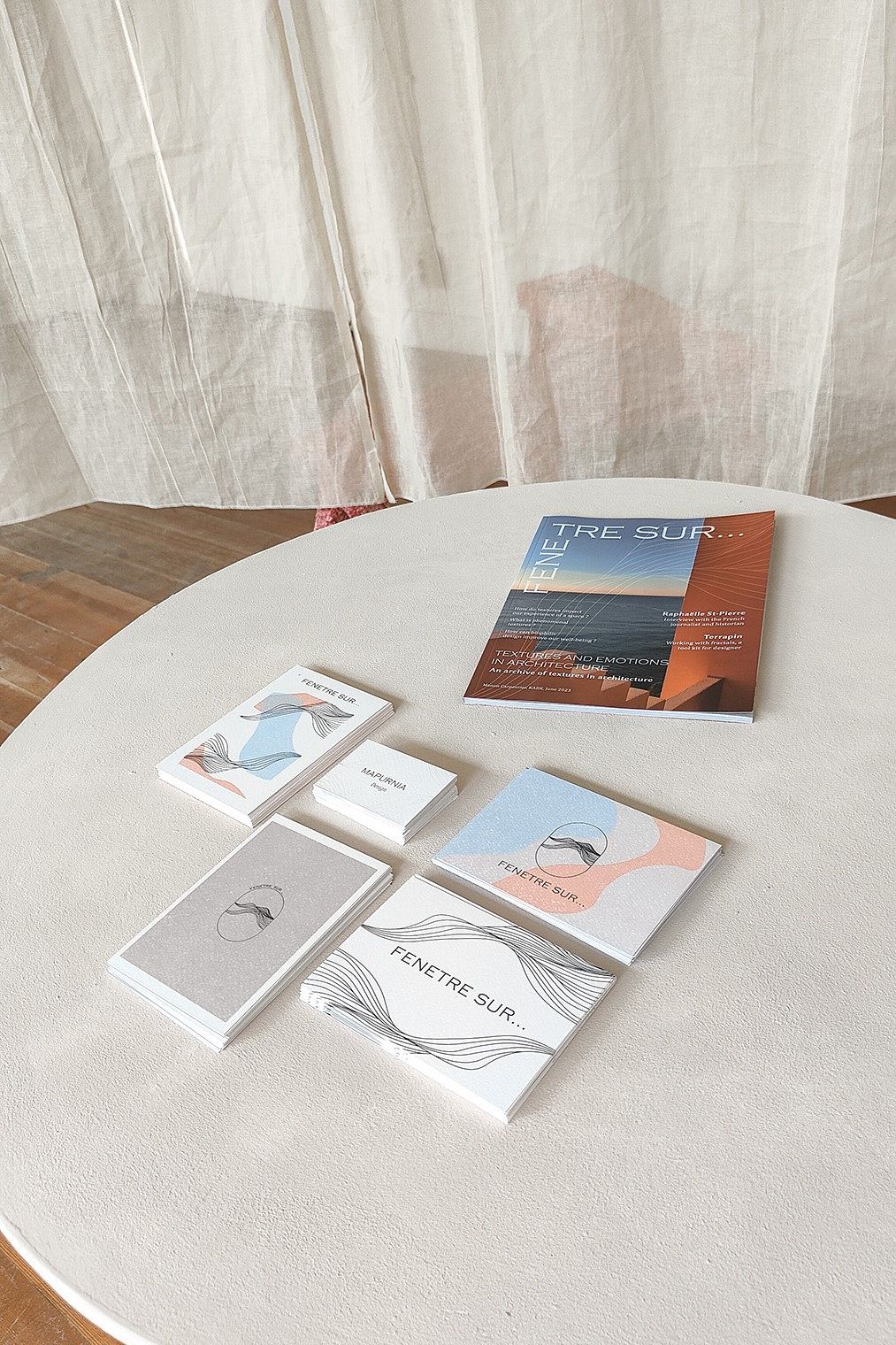
Manon Carpentier
Keywords: Textures, Architecture, Material research
Fenetre Sur… is a proposition of a spatial intervention in a repurposed space to bring back textures in interior. This project was a way for me to combine my healing journey with my passion for textures, patterns and repetitions. My aim was to understand how textures are impacting our experience of the space. In fact, being surrounded with texture in space can reduce our stress level and improve our well-being as well as performances
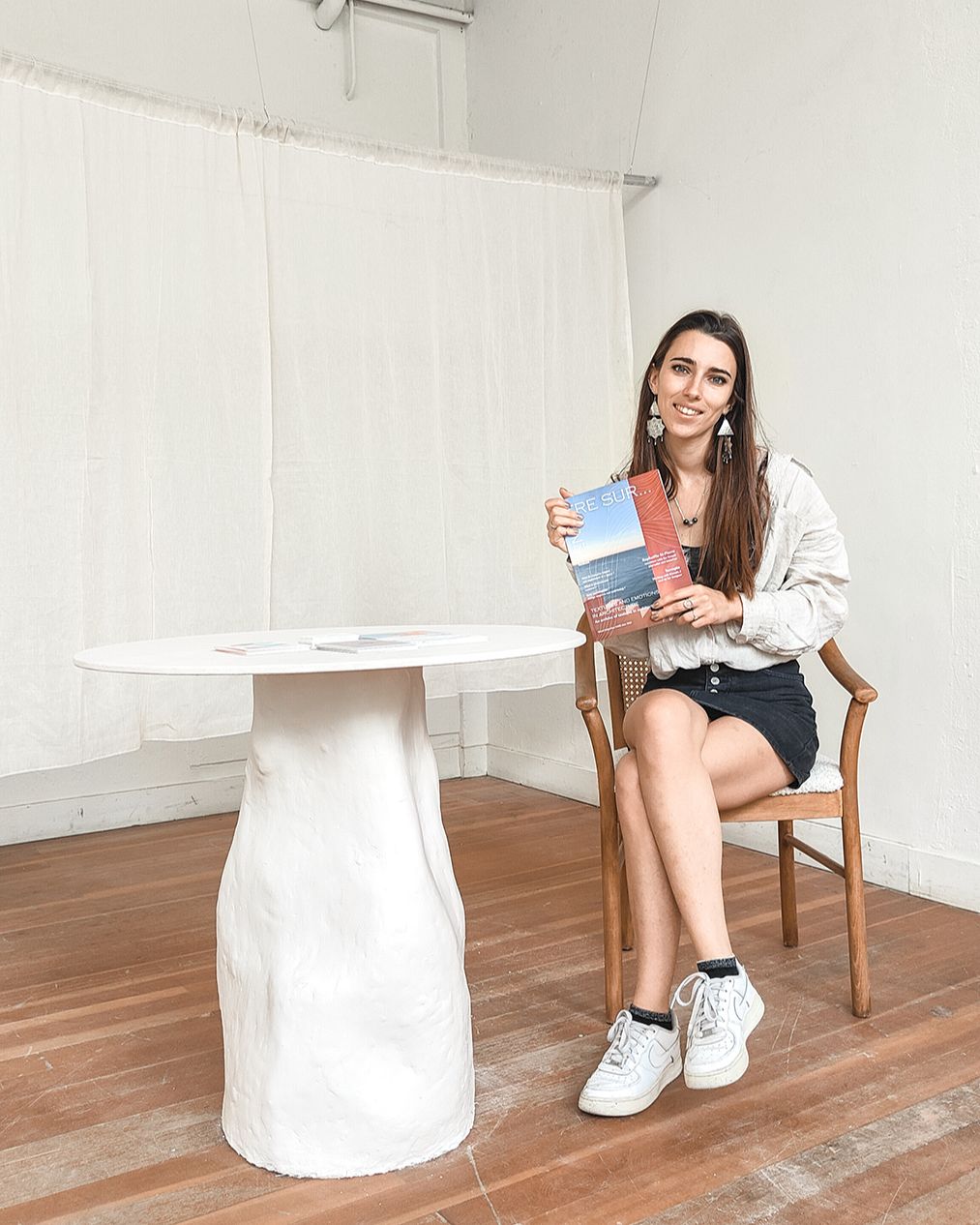
As a designer, i want to celebrate patterns in architecture, to make it resonate with forms from nature, its shape influenced by the landscape. Sociological, psychological, and historical research are then intertwined with my personal experience. After ten years of fighting with anxiety, panic attacks and being overwhelmed in contact with people, I can now understand and design healthy living and working environment by focusing on textures in interior. Free as nature, light as a textile floating in the wind, like a small boat carried by the waves, it is the new me and the inspiration for the shape of my project
Mail: mapurnia.blog@gmail.com


The textured panels are a way to materialize my thesis research focusing on textures in architecture. Two layers are intertwined in this research and translated in this screen. The literal texture can be observed at a small observation distance, the material research and the texture of the panels are visible from closer and bring back nature inside. The phenomenal texture is the pattern created by the structure on a surface and can be observed at a larger observation distance. The shape of the screen creates an interior landscape.
After many research on which material to use that be light, resistant and good for the environment, I created my own material from sawdust waste from the woodwokshop of the KABK with a natural geo-sourced binder. I did not want to be limited with wht is possible and hat tools are available so I created a textures mould and a hydraulic press to produce the panels with the desired shapes and measurements. It was important to not make concessions on the design for those reasons and I am proud to have create the tools that I needed to process the material and produce the textures panels.
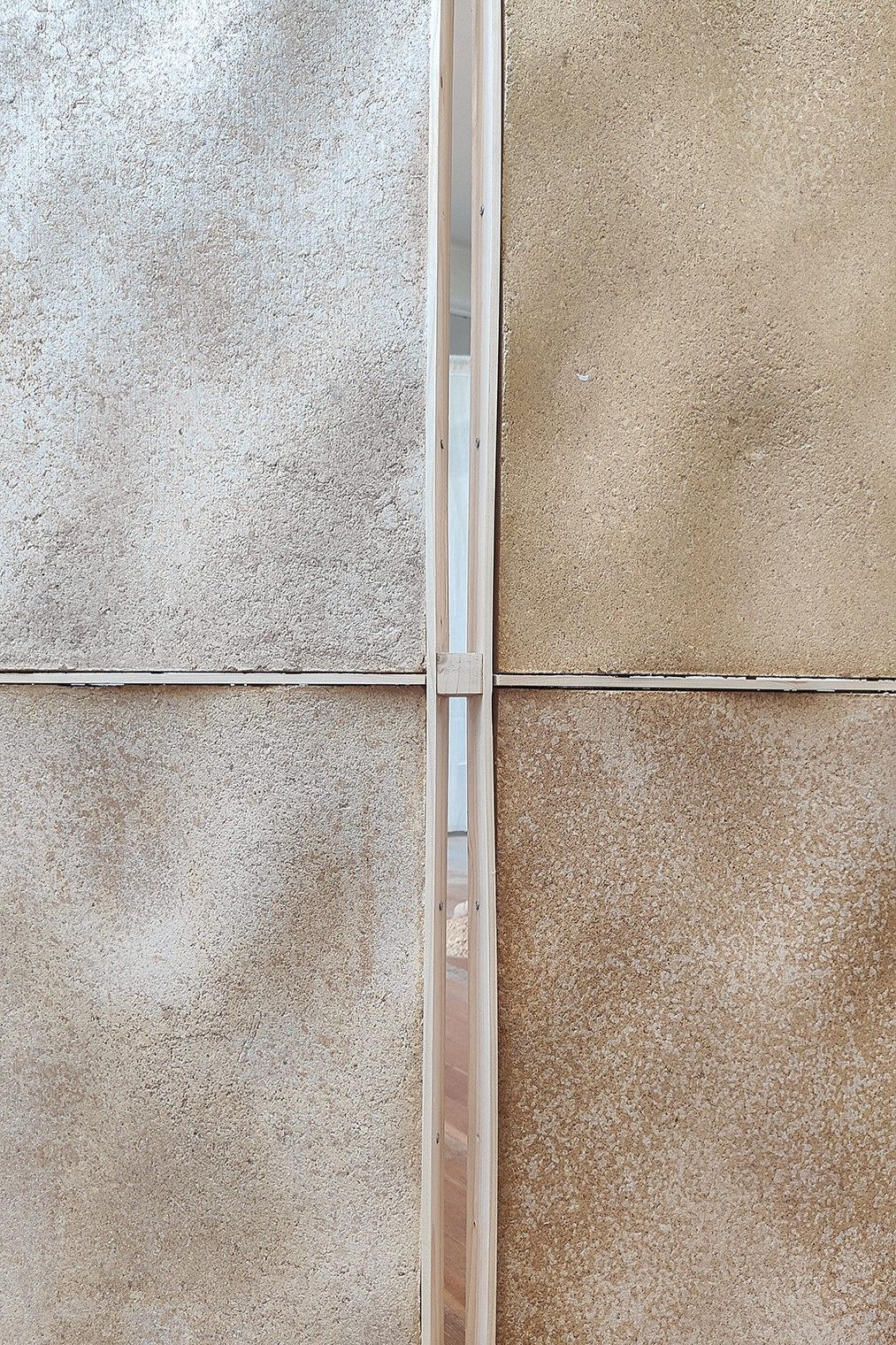
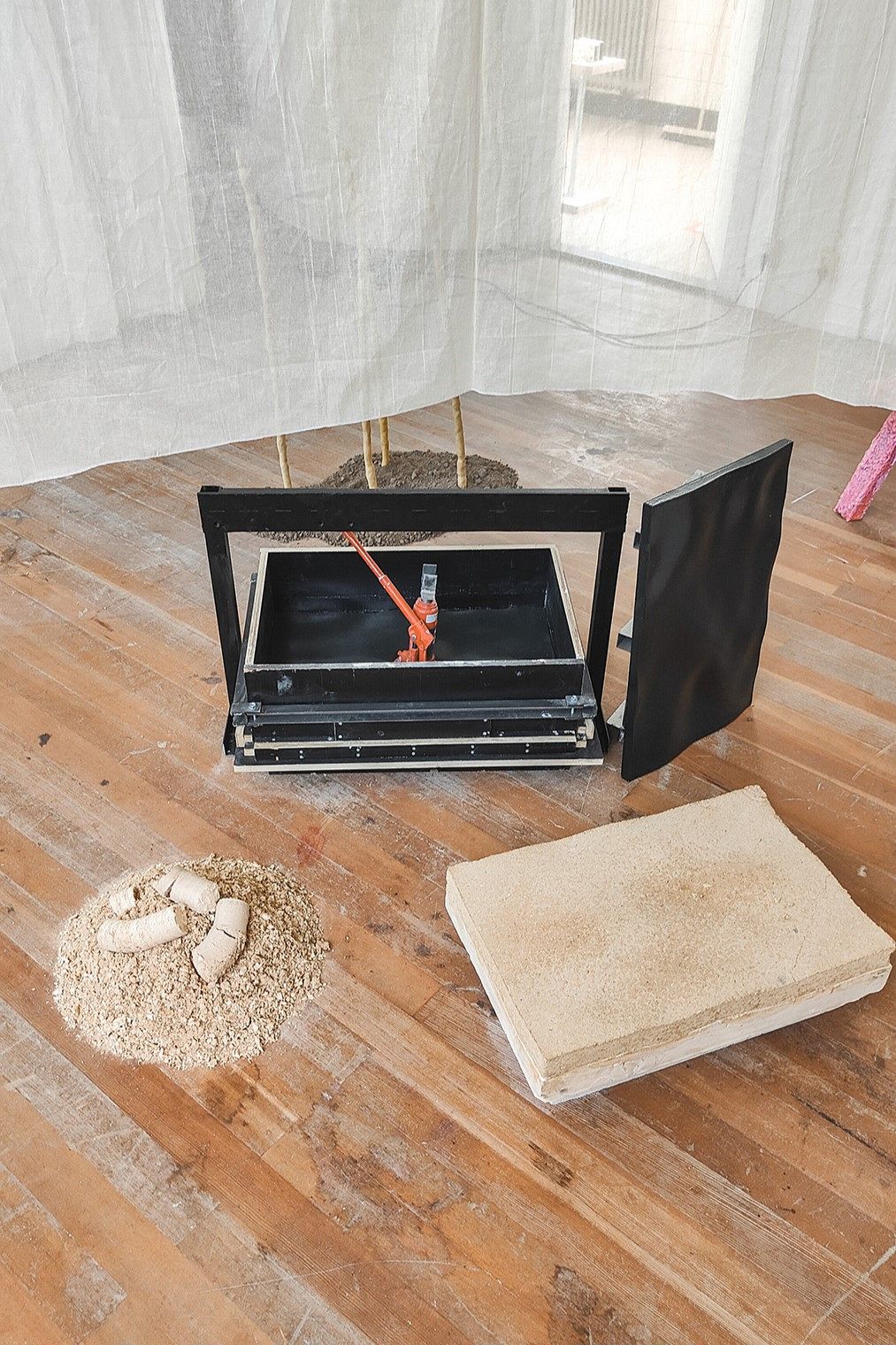
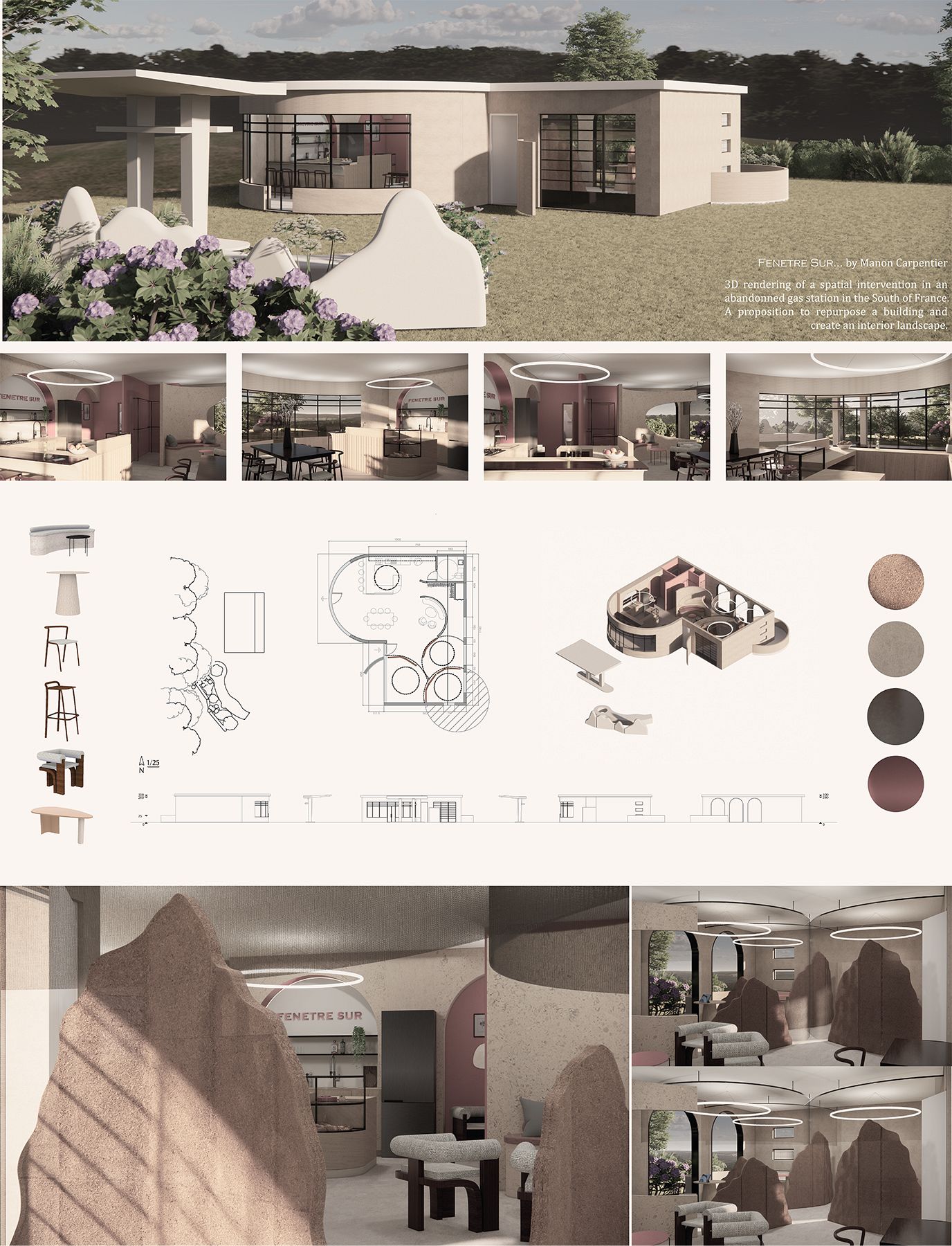
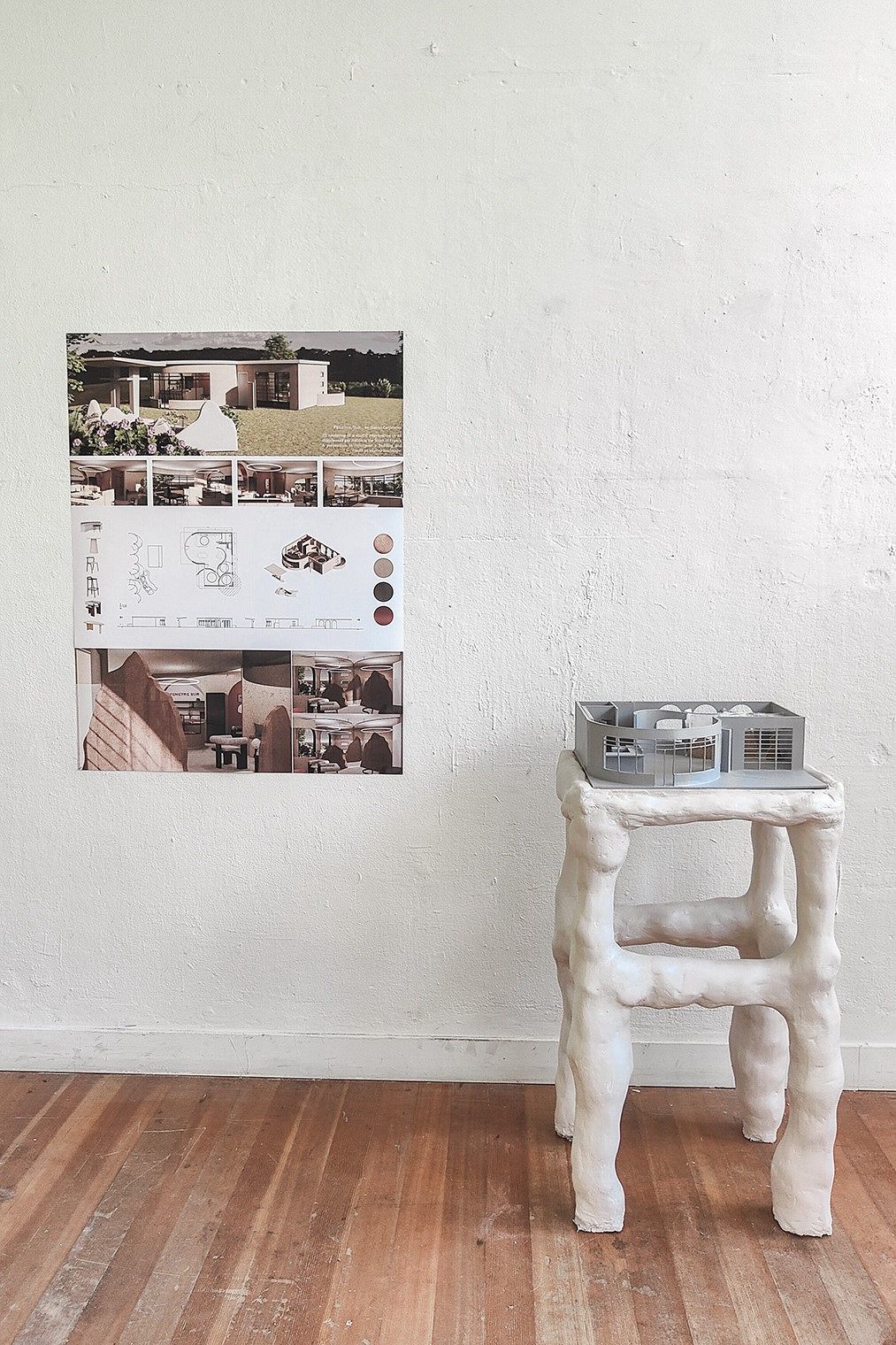
I wanted to understand and show how texture impact our experience of the space. This is a proposition of a spatial intervention to showcase the screens and to revaluate an abandoned building. Gas stations are going to be obsolete, and it is better to transform them than to destroy them to rebuiltd on top of it. In this spatial intervention, the panels are a way to bring back textures in architecture and to create an interior landscape to initiate a healthy living/working environment.
The rock table, and the bone table, are part of an instinctive material research to transform with different technics what we would today call trash.
Made from waste and found material, I use what is left aside to build something new with the same idea to create less waste and carbon print in the design process. The organic research of the shape and the act of covering the waste with plaster is a way to give a new life to those materials and at the same time remember them as ghosts of their past life.
